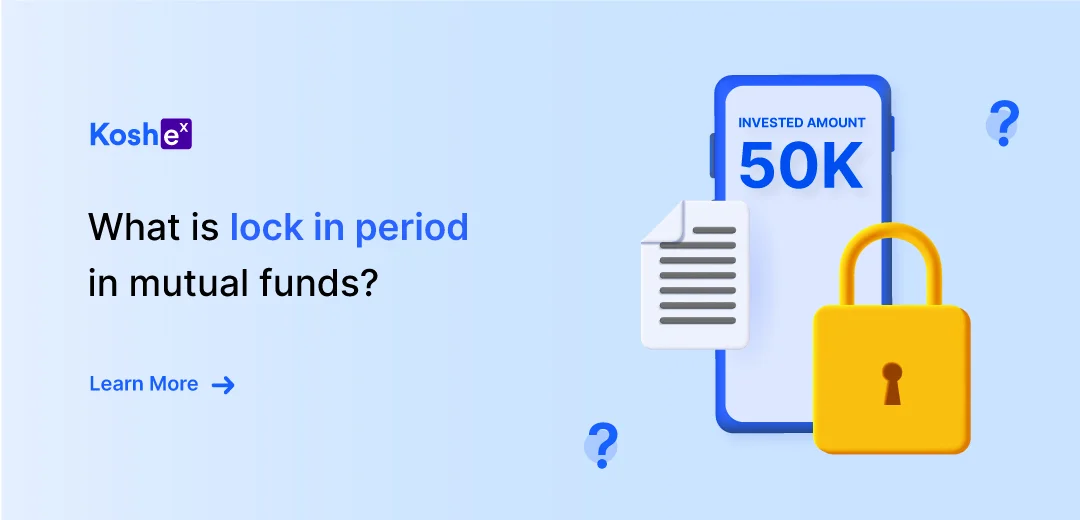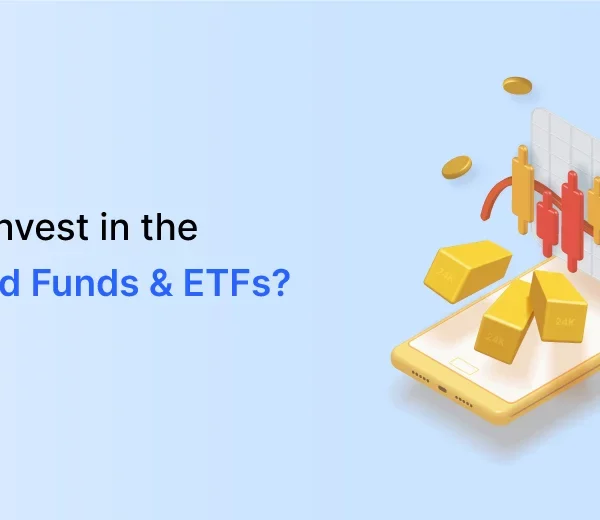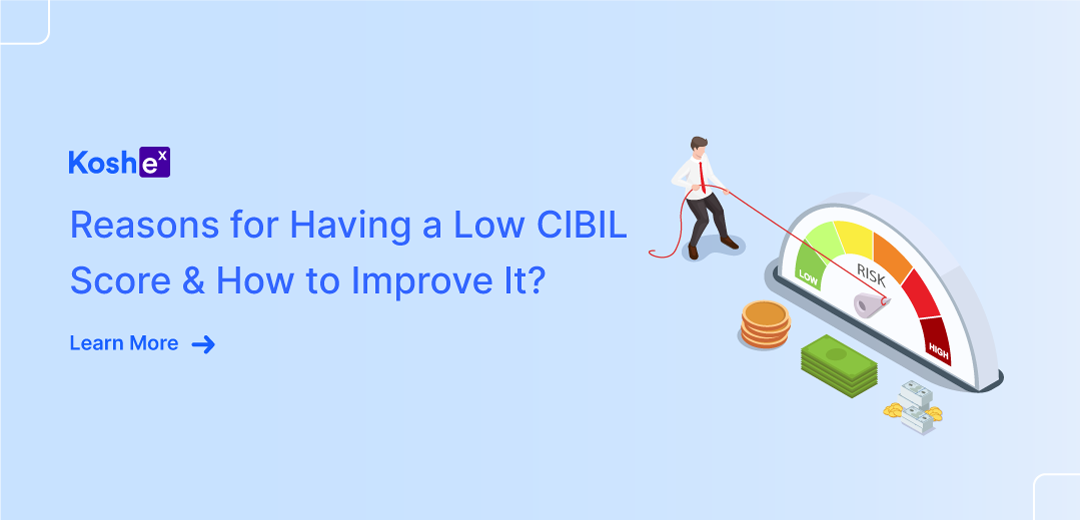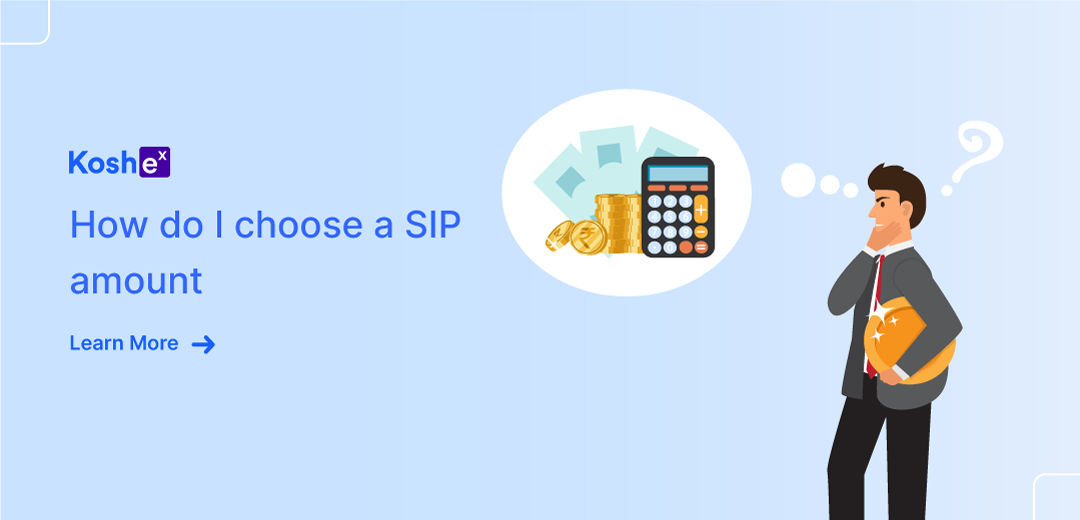What Is Lock-In Period For Mutual Funds
Lock-in periods are an important factor to consider before choosing the right investment instrument for you. So, what are they and what should you do after the lock-in period of a mutual fund ends? We are explaining all of these questions in our blog.
Before we try to understand what the lock-in period in mutual funds is, we should first understand what mutual funds are.
Meet Mutual Funds
Mutual funds collect money from several investors and all the money is then invested in a mutual fund scheme. They are managed by highly skilled professionals called fund managers.
The obvious question here is, how is this different from stock trading? Stock trading is when you buy individual stocks of different companies. But mutual funds club the stocks of a couple of companies to maximize returns and reduce risk.
For example, you want to buy stocks for ₹10,000. Firstly, stock trading requires hours of research and months of tracking the data of a particular stock.
You do all your homework and buy the shares of ABC company. Let’s say, ABC company is an IT (Information Technology) firm and it provides its services to clients in Europe and the U.S. One share of ABC costs ₹2000, and you have bought 5 shares.
The problem here is that your profits will solely depend on the performance of ABC. If the value of the shares falls, the stock, which was worth ₹10,000 earlier, might be worth ₹8,000 later.
So, how do you remedy this? You take your ₹10,000 and invest across the stocks of several companies, which belong to different industries.
In this case, even if the value of one company’s share declines, the other company stocks will be performing well. So, the losses made by one stock will be adjusted by the profits made by the other stocks. This is what mutual funds do.
They take your money and invest across various companies’ stocks, debt instruments, commercial papers, and so on. This helps you to earn returns even during stock market crashes.
What Is A Lock-In Period?
The lock-in period in mutual funds refers to the period during which the investor is prohibited from redeeming the units of the funds, either partially or wholly.
Apart from mutual funds, a lock-in period is common in private equity IPOs (Initial Public Offerings), hedge funds, etc., A lock-in period of a fund does not mean its investment tenure. The tenure of investment can be more than the lock-in period.
Most mutual funds don’t have a lock-in period but typically, close-ended mutual funds come with a lock-in period.
However, there is an open-ended mutual fund that comes with a lock-in period and that is, an Equity Linked Savings Scheme (ELSS). When you invest in an ELSS fund, your money is locked in for three years and you cannot withdraw during that time.
An ELSS is a multi-cap equity fund, which invests the funds across market capitalization and sectors. It helps you save on taxes and offers a cushion against volatility.
Why Is Lock-In Period Important?
The lock-in period helps newbie investors to stay invested during volatile times. Some investors would redeem their investments in panic whenever their portfolio goes in the red for a couple of weeks.
So, a lock-in period will keep their investments intact for a specific period and it gives them the opportunity to earn good returns from staying invested for a long period of time.
The lock-in period helps investors stick to their financial plan and shows how keeping funds invested for a longer duration turns out to be profitable.
Lock-in periods also allow investors to receive taxation benefits of long-term capital gains.
Also, lock-in periods help induce stability in a mutual fund, as excessive selling of funds raises the redemption, creating liquidity issues. A lock-in period helps to preserve the liquidity of the mutual fund.
What To Do After The Lock-In Period?
Most times, investors will withdraw their investments once the lock-in period expires. However, this might not be the right strategy for many reasons.
Sometimes, it is a good idea to stay invested to earn higher returns in the long run. So, here are a few things that you can do after the lock-in period.
Do A Thorough Review
Let’s say that you have invested in an ELSS fund and once the 3-year lock-in period is over, you should analyze the performance of the fund.
We understand that you invested in an ELSS fund solely to get tax deductions but that doesn’t mean that you should overlook the fund’s performance.
However, if you restrict your ELSS fund to only tax benefits, you will lose out on higher returns.
Even after the expiry of the scheme, it is recommended to stay invested in the fund at least for a period of 5 to 7 years.
Equity funds tend to give good returns over a long period of time. While analyzing the performance of the fund, you need to review the historical risk-adjusted returns over the past 5 to 10 years and also compare it with other funds in the same category.
Continue Your Investment
If you have invested in an ELSS fund, you can continue to stay invested even after three years. At the end of the day, an ELSS fund is a multi-cap equity fund, which invests the funds across market capitalization and sectors.
So, if you stay invested for a longer period, you increase the possibility of earning higher returns, which would have outdone the amount saved in taxes.
But, You Can Encash It…
If you are nearing a financial goal, or there is a medical emergency or a sudden travel plan. Even if these situations, it is a good idea to withdraw your investments partially instead of completely redeeming them.
Since ELSS becomes an open-ended fund after 3 years, an investor can redeem the units as a whole or in a lump sum.
There is no exit load or tax levied upon such exit. So, if there is an emergency or an important event, you can consider encashing the fund after the lock-in period.
In The End…
Lock-in periods ensure that you get the complete benefit of investing by preventing you from withdrawing your investments whenever you panic during a stock market crash.
It also brings discipline to your investing journey and helps you stick to your financial plan. It is perfect for newbie investors, who want to get started on mutual funds.
If you are looking to invest in an ELSS fund, head over to Koshex to start investing for free. All you need to do is create an account in less than 2 minutes and choose a fund of your choice.
No paperwork is needed and no hassle is involved. Sign up with Koshex to see how we make investing simple and effortless.









Leave a Comment